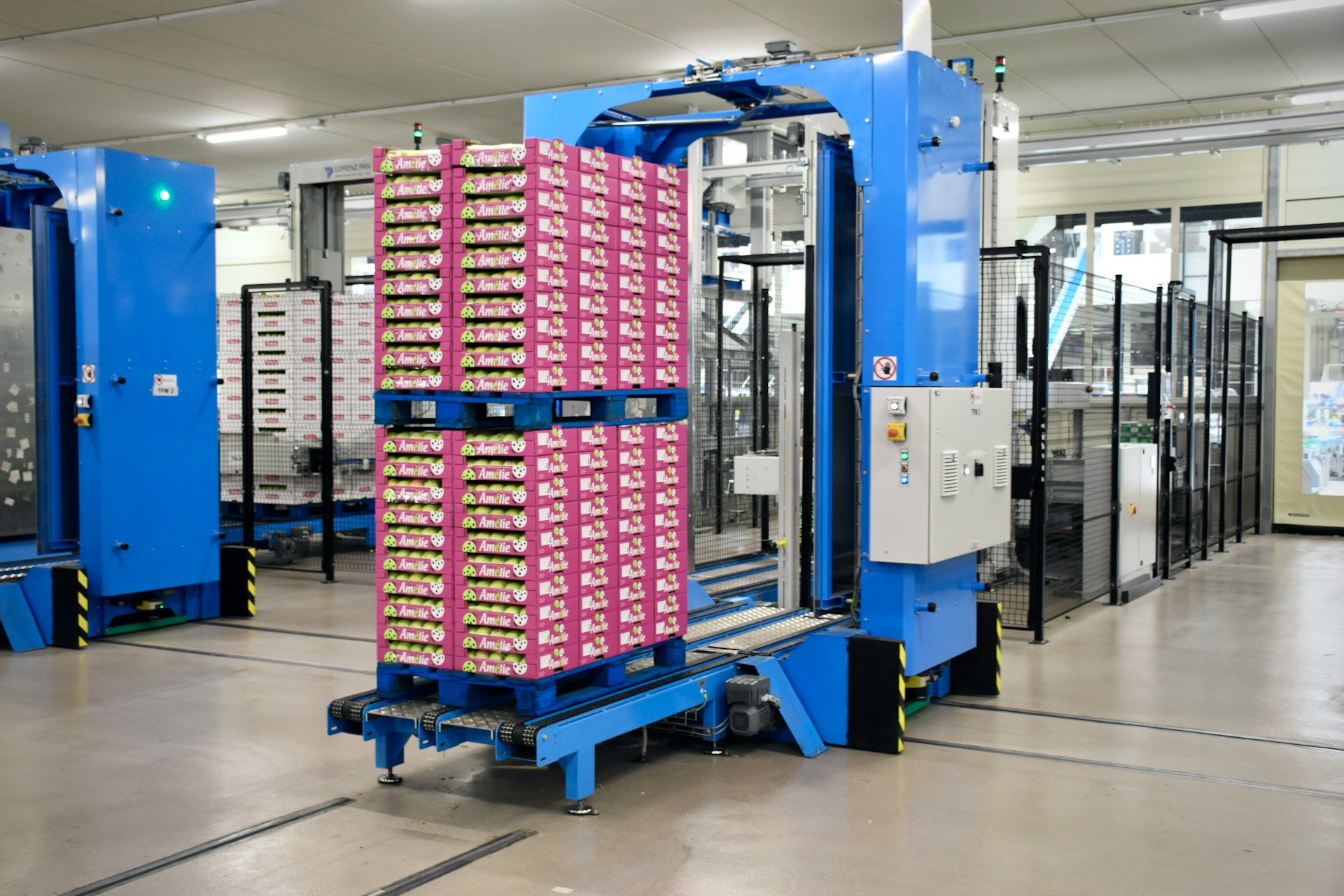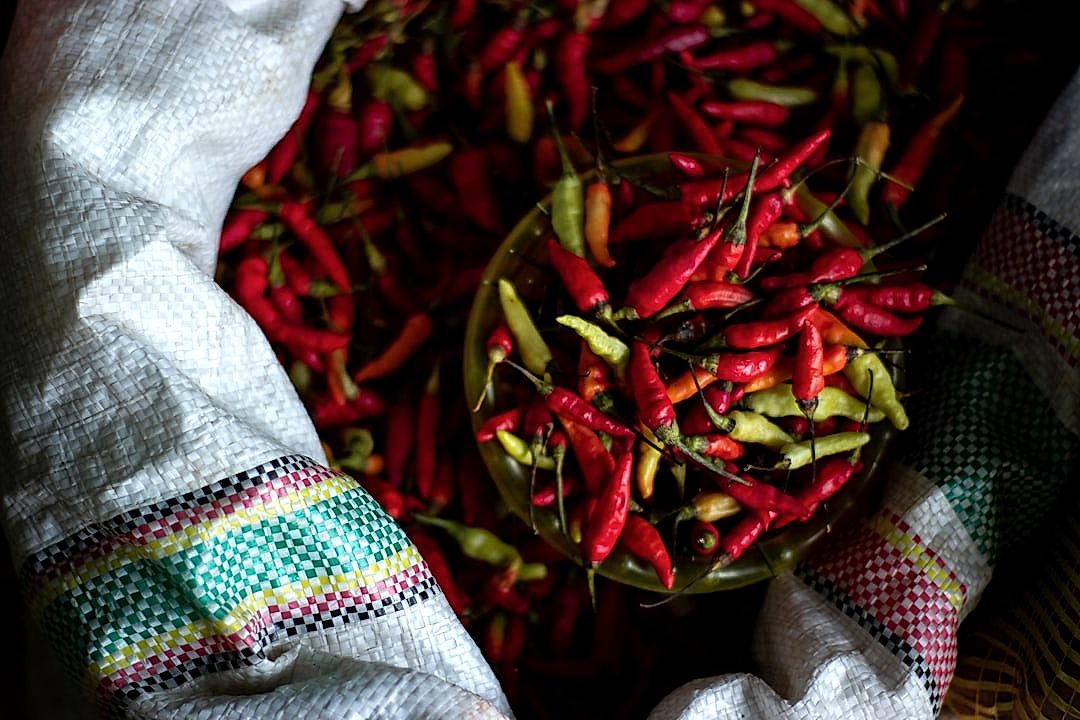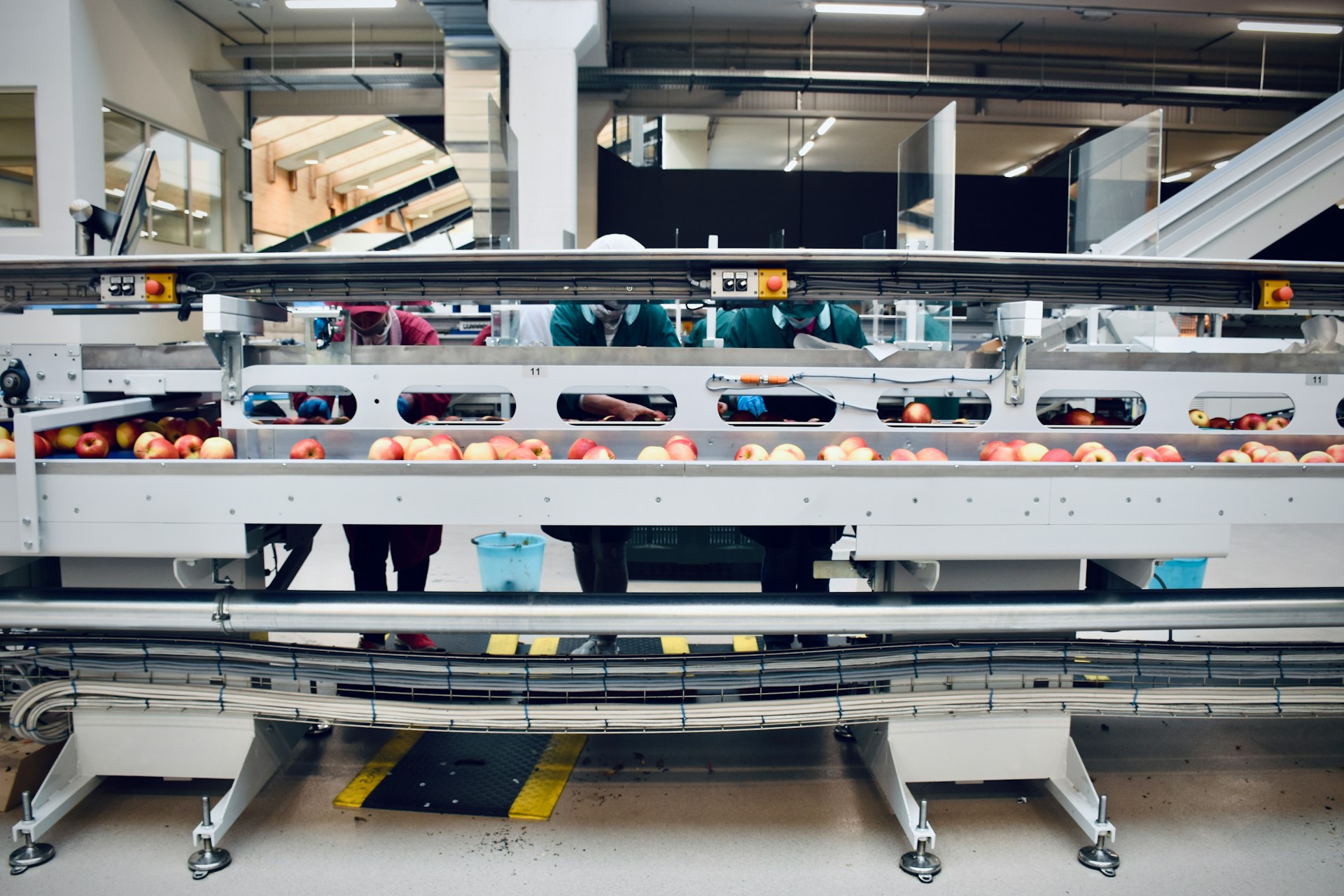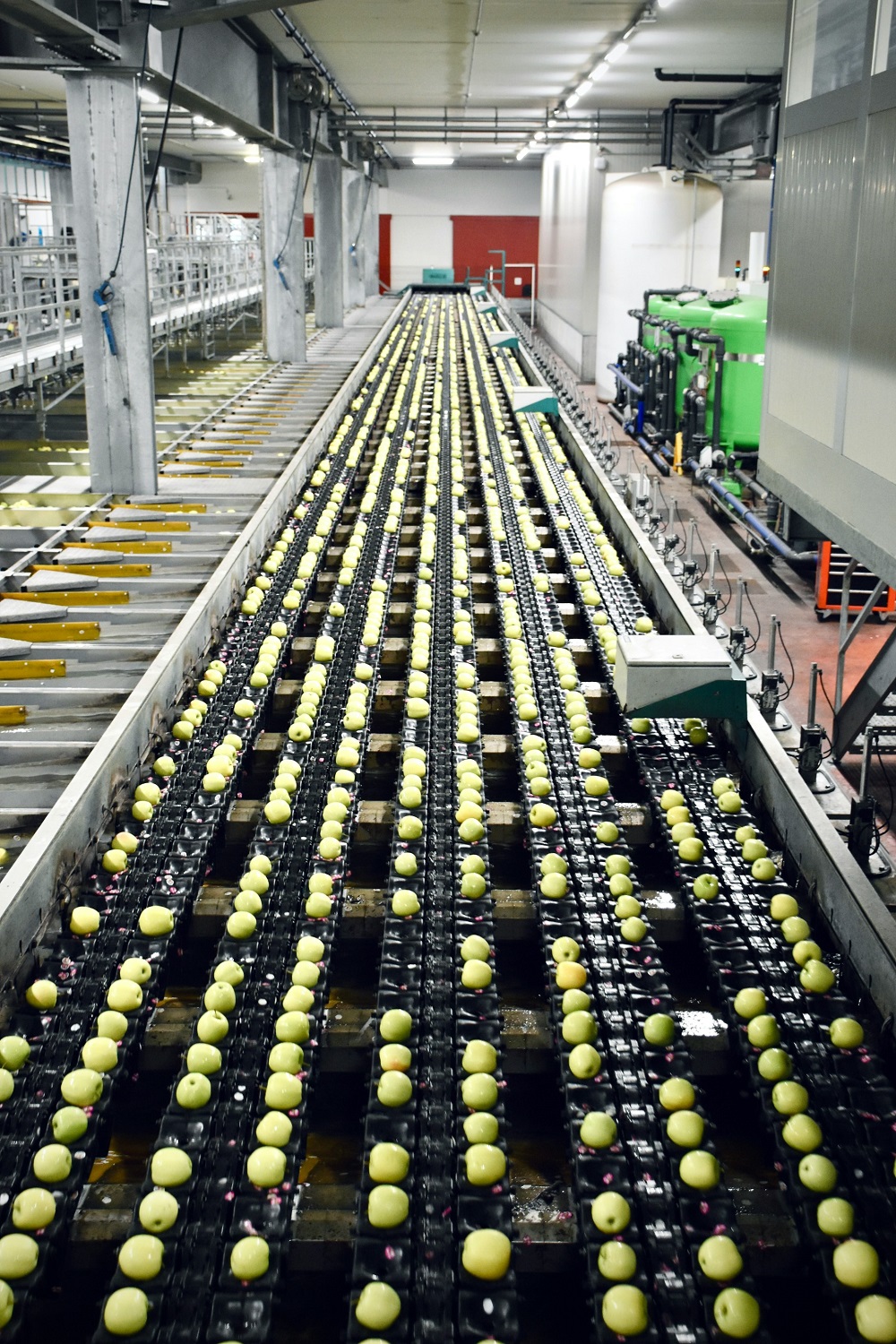In the evolution of the food industry, no sector remains untouched by technological advancements, and the produce sector is a prime example.
As the demand for fresh and high-quality produce escalates, so does the need for better and more efficient processing techniques.
Radical improvements have been witnessed, turning traditional farming methods on their heads.
The advancements are set to reshape the landscape of the entire produce industry.
It underscores the industry’s mission to ensure consumer satisfaction is maintained, while sustainability is addressed.
By looking at the latest techniques, we can understand the ongoing transformative impact on the produce industry.
Innovative Processing Techniques Transforming The Produce Industry
1. Automated Robotic Harvesting Systems
As technological advancements continue to shape various industries, the produce industry is not exempt. Automated Robotic Harvesting Systems have become a pivotal factor in reshaping the traditional forms of farming.
These systems serve as a game-changer when it comes to the painstaking task of harvesting crops.
Utilizing automated robotics helps to reduce the heavy reliance on manual labour and can effectively streamline and expedite the harvesting process.
These robots are designed to be precise and meticulous, ensuring that crops are not damaged during the harvest.
Moreover, the implementation of robotic harvesting systems can help to increase productivity and efficiency as these machines can work around the clock and in most weather conditions.
This not only reduces the time required to harvest the field but also minimizes the potential loss of produce due to harsh weather conditions or pest attacks.
Since these machines are programmed to perform specific tasks, they can easily adapt to different crops and harvesting methods, providing unmatched flexibility to farmers.
In the long run, the use of automated robotic harvesting systems can significantly reduce farming costs, making the produce industry more sustainable and profitable.
The constant advancements signify that robotic systems will not only be limited to harvesting but could also assist in other farming activities such as planting, pruning, or pest control.
The integration of AI for real-time decision making based on environmental conditions indicates how the industry is increasingly becoming a technologically intensive sector.
However, the adoption of robotic harvesting systems does impose some challenges such as the initial investment costs and the disruption of traditional farming techniques.
Despite the challenges, the potential benefits outweigh the drawbacks, indicating that the future of the produce industry lies in automation.
In order to keep up with the soaring global demand for food, it is imperative that the industry embraces innovative solutions like robotic harvesting systems.
This innovative transformation not only enhances the efficiency of the produce industry but also invites the opportunity for dynamic advancements in technology to shape the future of farming.
While the concept of automated robotic harvesting systems may still seem alien to many, the reality is that they are already here, revolutionizing the agriculture sector.
2. Precision Agricultural Drones
As the demand for high-quality produce continues to surge, so does the necessity for rapid and efficient farming techniques. One technological advancement that is rapidly transforming the agricultural sector is the use of Precision Agricultural Drones.
Agricultural drones are unmanned aerial vehicles that perform various farming operations more precisely and efficiently than traditional farming methods.
The drones are equipped with advanced sensors and imaging capabilities that allow them to monitor crops and livestock, optimizing resource allocation and boosting yields.
The drones gather crucial data about factors like crop health, soil moisture levels, and pest infestations, enabling farmers to make informed decisions and tailor their farming practices accordingly.
These high-tech tools offer significant improvements in farm management, precision planting, crop spraying, irrigation, and harvesting.
Through the use of precision agricultural drones, farmers can increase their productivity and profitability, producing healthier, higher-quality produce while minimizing environmental impact.
They also contribute to farmers’ capacity to carry out planting and harvesting tasks more efficiently and effectively, even in challenging weather or terrain conditions.
With the help of precision drones, the farming industry can produce more food to meet the growing global population’s needs.
These drones have become a key component of smart farming practices, representing a significant technological leap in the agricultural sector.
Gone are the days when farmers needed to rely solely on their knowledge and manual labor for farming. Advanced technologies like precision agricultural drones are now providing a much-needed helping hand.
However, the cost of these drones and the technology they incorporate can be a deterrent for some farmers, particularly those in developing countries or those operating on a small scale.
Despite these challenges, the potential benefits of drone use in agriculture are compelling enough to merit the development of more accessible and affordable solutions.
As the technology improves and becomes more accessible and affordable, more farmers worldwide will undoubtedly adopt precision agricultural drones in their farming operations.
By integrating precision agricultural drones into the farming process, the industry is not only meeting current demand for fresh produce, but it’s also preparing for future challenges.
Transforming the agriculture industry, these drones are potent allies in the battle against food insecurity and the mission to produce sustainable and quality food.
3. Hyperspectral Imaging for Quality Control
In the field of agriculture, the use of hyperspectral imaging for quality control has been gaining significant traction in recent times.
This innovative processing technique involves the capture and processing of images across the electromagnetic spectrum.
It measures light intensity in multiple spectral bands, thus providing a detailed picture of the object under scrutiny.
Hyperspectral imaging can identify a wide range of attributes, including diseases, pests, and nutrient deficiencies in crops.
It can also be used to measure the ripeness and freshness of fruits and vegetables, thus enhancing quality control in the produce industry.
This technology enables growers and processors to make informed decisions about their crops, leading to higher yields and enhanced quality of produce.
Being non-destructive and rapid in nature, hyperspectral imaging is ideal for in-line inspection of fruits and vegetables.
Moreover, this technique is significantly better than traditional imaging methods as it can capture far more information.
Recognition of hyperspectral imaging’s potential has led to the development of portable and robust systems that can be used in the field.
These systems can scan an entire crop field in just a few minutes, allowing for real-time detection and intervention.
This increases efficiency and reduces the likelihood of crop loss or contamination.
Furthermore, hyperspectral imaging can also aid in the removal of foreign materials such as plastic, metal, and stones from the produce.
By offering results in the form of pixel-based maps, this technology assists in detailed analysis and reporting, which can lead to enhanced operational efficiency.
However, the implementation of hyperspectral imaging requires a significant investment and specialized training for operators.
Despite these challenges, many believe that this technology is worth the investment, owing to the significant improvements in quality control it promises to deliver.
Advancements in machine learning and artificial intelligence are only expected to boost the efficacy of this innovative processing technique in the future.
4. Radio Frequency Identification (RFID) Tracking
Radio Frequency Identification (RFID) technology is a powerful tool that is transforming the produce industry.
It provides a highly effective method of tracking and monitoring each piece of produce from its origin to the end consumer.
An RFID system works by using minute, antenna-equipped chips that emit unique identification codes when a compatible device is nearby to read them.
These codes can be associated with all sorts of information, including the type of produce, its source farm, harvest date, and storage conditions, among other data points.
RFID tracking helps create a transparent and trusted chain of information about each piece of produce, thereby improving the overall quality of the produce supply chain.
RFID technology can also be a boon for produce traceability, an increasingly important concern for both consumers and regulators around the world.
In the event of an issue like a disease outbreak, an RFID system can quickly and accurately identify the source of the problem, enabling faster, more targeted recalls and mitigations.
Simultaneously, by giving consumers access to the data generated by an RFID system, businesses can engender trust and loyalty by demonstrating their commitment to transparency and quality.
Moreover, RFID tracking provides valuable insights into the efficiency of various supply chain processes.
By analyzing data from an RFID system, businesses can identify bottlenecks, inefficiencies, or wastage, and implement changes to optimize their operations.
RFID technology moreover supports sustainability efforts in the produce industry.
With accurate, real-time data on the condition and location of each piece of produce, businesses can significantly reduce food waste.
Hence, this technology also has the potential to play a significant role in the pursuit of global goals for food security and environmental sustainability.
However, the implementation of RFID tracking raises certain challenges, For instance: privacy concerns, cost, and technical complexity.
Despite these concerns, the overwhelming consensus is that the benefits of RFID tracking technology far outweigh the potential drawbacks.
Overall, RFID technology presents an exceptional opportunity for the produce industry to become more transparent, efficient, and sustainable.
5. Vertical and Hydroponic Farming Techniques
One of the most innovative techniques transforming the agriculture and produce industry is the use of vertical and hydroponic farming methods.
These techniques are radically reshaping the traditional agricultural landscape and increasing efficiency by allowing crops to be grown in controlled environments.
The key to these technologically driven farming practices is the use of hydroponics and aeroponics methods which replace soil with nutrient solutions or mist.
This significant shift eliminates many of the challenges posed by soil farming, including pest problems, soil-borne diseases and weeds, consequently increasing overall productivity.
With vertical farming, cultivation of crops occurs in vertical layers, stacked upon each other, creating what is often referred to as agricultural skyscrapers.
Vertical farming holds the potential to maximize land use by drastically reducing the amount of space needed for traditional farming methods.
One of the biggest benefits of vertical farming is its ability to grow crops all year round, unaffected by weather conditions which can destruct crops and decrease yield in traditional farming.
Meanwhile, hydroponic farming involves the growth of plants in a water-based solution that is rich in essential nutrients.
This method allows for precise control over the nutrients the plants receive, resulting in higher yields and healthier, more vibrant crops.
Unlike traditional farming methods, hydroponic systems require no pesticides or herbicides, helping to create more sustainable and eco-friendly produce.
Academics, biologists, and tech companies are all investing in research and development into these innovative techniques, foreseeing the significant impact they could make in the burgeoning field of sustainable agriculture.
Moreover, hydroponic and vertical farming methods could also play a transformative role in addressing food scarcity issues in areas with poor soil quality or limited land availability.
However, these techniques are not without challenges, including high initial setup costs, increased energy consumption and the need for specialized training.
Despite these challenges, continuous technological advancements are making these promising farming techniques more accessible and efficient.
The exciting growth in vertical and hydroponic farming holds great promise for the future of the produce industry, offering a viable solution to some of the greatest challenges of global agriculture.
Thus, these innovative farming techniques, although relatively new, are contributing significantly towards achieving sustainable and efficient agriculture globally.
6. Post-Harvest UV Treatments
The emerging use of post-harvest UV treatments is revolutionizing the produce industry.
These treatments involve exposing harvested crops to ultraviolet light, a non-chemical process which can drastically reduce crop spoilage.
The use of UV light as a post-harvest treatment method can extend shelf-life of fresh produce, reduce waste, and provide healthier, safer options for consumers.
After the harvest, fruits and vegetables are often exposed to a variety of pathogens such as molds, yeasts, and bacteria, resulting in rapid deterioration, often before it reaches the end consumer.
Post-harvest UV treatments can effectively kill or reduce these pathogens, slowing down the decaying process, and preserving the freshness of the produce for a longer period.
This innovative process not only benefits the consumers through healthier and fresher products, but also the producers and retailers as they can reduce waste and increase the profitability of their business.
This method leverages the natural germicidal properties of UV light, making it a safe and eco-friendly alternative to chemical treatments.
Consumers are becoming more health-conscious and are demanding more natural, chemical-free food options.
Therefore, the use of post-harvest UV treatments allows the produce industry to meet this growing demand and differentiate their products in the market.
It is important to note that this process does not alter the taste, texture, or appearance of the produce, thereby ensuring that quality is not compromised.
UV treatments have been proven to be effective on a wide range of produce including fruits, vegetables, and even herbs and spices.
With proper dosage and exposure times, ultraviolet light can be used to treat a broad spectrum of pathogens.
Moreover, the application of UV treatments post-harvest is not complex, and can be easily integrated into the existing processing lines of many producers.
Furthermore, as UV light sources become more efficient and cost-effective, this method will likely become more common in the produce industry.
Post-harvest UV treatments represent a promising and innovative approach to ensure the sustainability of the produce industry while meeting consumer demands for fresher, healthier produce.
7. Biodegradable Packaging for Produce
In a world where environmental consciousness and sustainability are at the forefront, it’s no surprise that biodegradable packaging for produce is one key area where the produce industry is seeing innovation.
The rise of biodegradable packaging is not only driven by environmental concerns but also by consumer demand for more eco-friendly alternatives to traditional plastic packaging.
With this trend, producers and retailers are moving towards employing innovative and sustainable packaging solutions that contribute positively to the world’s environmental goals.
One way this is being achieved is through the use of plant-based polymers, a greener and more sustainable alternative to petroleum-based plastics.
These biodegradable packages not only decompose naturally in the environment, but they also often require less energy to produce, making them a win-win for sustainability.
Apart from plant-based polymers, companies have been ushering in innovation through a variety of materials such as mushroom roots, seaweed, and even food waste.
For instance, some firms are leveraging mushroom roots, which act as a bonding agent for farming by-products like wheat chaff, creating an organic, biodegradable packaging solution.
A few companies have also experimented with using food waste to create packaging material, which not only reduces the dependence on non-renewable resources but also tackles the problem of food waste.
Within the realm of produce packaging, biodegradability and extendibility go hand-in-hand.
Packaging solutions that are both biodegradable and that enhance the shelf life of fresh produce are the holy grail of sustainable packaging innovations.
Similarly, some packaging products incorporate natural coatings, such as a layer of beeswax, that provide additional protection and extend the product’s life without depending on non-recyclable materials.
All these innovative biodegradable packaging solutions send a message to consumers that not only is the brand sustainable, but it is also concerned about the quality and freshness of their produce.
This not only strengthens the brand image but also encourages customer loyalty and higher sales.
While these technologies and innovations are promising for a sustainable future, it’s critical to remember that effective implementation is key to achieving their full potential.
One minor hiccup, such as a lack of proper waste management facilities, could mean the difference between biodegradable packaging being a boon or a bane.
Despite the challenges, it’s clear that the future of packaging in the produce industry lies in biodegradability and sustainability.
The Bottom Line
The rapid integration of technology within the agricultural sector points to an imminent revolution in farming practices.
Automated robotic harvesting systems, precision agricultural drones, and the use of hyperspectral imaging for quality control not only streamline operations but enhance productivity and reduce environmental impact.
Moreover, innovations such as RFID tracking, vertical and hydroponic farming techniques underscore the evolution of agriculture, combining sustainability with advanced farming methods.
The post-harvest UV treatments offer an efficient, non-chemical alternative, addressing concerns related to food safety and extending product shelf life.
In tandem with this, the shift towards biodegradable packaging for produce bolsters the commitment to eco-friendly measures within the industry.
Driven by technological advancements, the future of agriculture seems promising, capable of overcoming traditional challenges and meeting the growing global food demand sustainably.




